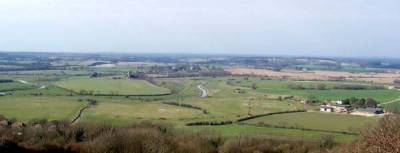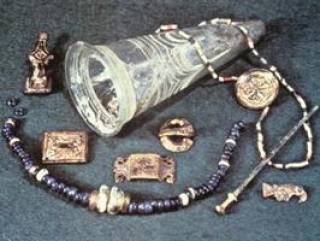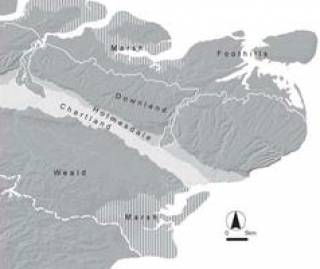Anglo-Saxon kingdoms in southern England AD 400-750
Leverhulme Trust-funded Research Project 2006-9
Part of the Early Medieval Atlas.
Introduction
Within the period AD 400-750 dynamic cultural changes saw localised 'tribal' groups coalesce into organised kingdoms or provinces; a change captured in one of the few early-medieval documents handed down to us: the Tribal Hidage. But, how did these kingdoms come into being? What stimulated these changes in society? And why were some kingdoms more successful than others? Although these questions have long been of central concern to early medieval historians, archaeological contributions to the debate have been are rare. Given the relative paucity of written evidence for this proto-historical and early historical period, this imbalance is rather surprising. This is particularly noteworthy as the archaeological record for the Anglo-Saxon cultural area in this period represents the richest phase of furnished burial in British archaeology across much of Lowland Britain.
Our pioneering project, Beyond the Tribal Hidage: Anglo-Saxon kingdoms in southern England AD 400-750,
funded by the Leverhulme Trust for three years starting in September
2006, argues that the archaeological evidence is of vital importance to
our present and future understanding of the first three centuries of the
Anglo-Saxon era. We will conduct the first systematic study of this
evidence at a broad regional scale. Quantification and analysis of
burial, settlement and findspot evidence, and an assessment of the
geographical context of these data, will address key questions regarding
the processes and timing of English state formation. No comparable
research of this type has been conducted in over thirty years, and none
has sought to unify the archaeological research resource produced in the
intervening period (e.g. excavation, and the Portable Antiquities
Scheme) and apply technologies new to the field (e.g. relational
database analysis within a GIS environment). In approach and intent this
ground-breaking project has potentially a major and significant
contribution to make to the study of a crucial and dynamic period.
Project aims and objectives
The aim of the project is to obtain a systematic characterisation of the three kingdoms of the Jutes of Kent, the South Saxons and the West Saxons in order to examine and compare regional and temporal variation in identity and society accompanying the emergence of early states. The research will adopt, for the first time, an explicitly comparative approach to assess the scale, form and complexity of neighbouring early Anglo-Saxon kingdoms; particularly as they relate to social power and the category of the individual in social construction. It will develop archaeological methods for defining the physical and institutional basis of early-state economics, and assess their relationship to agency and social dynamics.
It will adopt two mutually-sustaining approaches.
Firstly, the detailed and systematic examination of archaeological
evidence from each region will be studied for the first time using a
comprehensive and comparable methodology, including burial data,
archaeological evidence from excavated settlements, and find-spots of
stray finds, particularly those produced by, for example, the Portable
Antiquities Scheme (PAS). This research will provide data for a
comparative assessment of the social and economic organisation of
populations in southern England. Secondly, detailed analysis of the
regional landscape context of these data and their relationship to
settlement, local topography, land-ownership and food production regimes
over time, will enable us to identify the economic processes
underpinning state formation.

The originality of the proposed research derives from both its scope and methodological approach to a fundamental, yet neglected, topic. Although a substantial body of published work on Anglo-Saxon state formation exists focussing primarily on evidence from written sources, by contrast, archaeological research on the same theme has been relatively rare. Equally, whilst archaeological evidence often forms the basis of artefact studies and thematic syntheses (e.g. craft production; urbanisation), few studies have previously attempted an essentially archaeological approach to our understanding of the development of societies to put alongside related historical research. The significance of the project is that we will be able, for the first time, to compare sites throughout all of the territories of several early states on a like-by-like basis. It is argued that this new perspective is crucial not only to our understanding of social, political and economic organization within early kingdoms, but also to our assessment of the dynamic relationships between them. It is anticipated that our research will provide not only new interpretations and clearer understanding of the processes of kingdom formation, but may also bring to light previously unrecognised associations in the material culture used to signify identities in burial. Furthermore, as a model example of state-formation processes, the project will have significant relevance to the study of comparable past societies in different times and places on a global basis.
Project Staff
- Principal Investigator: Dr Martin Welch
- Research Assistant: Dr Sue Harrington (email: s.harrington@ucl.ac.uk)
- Postal address
Funded by the Leverhulme Trust
 Close
Close



